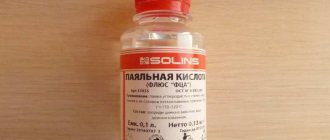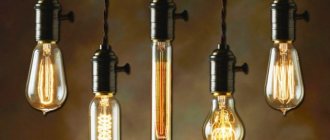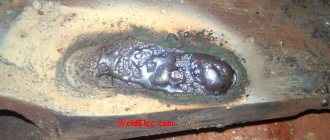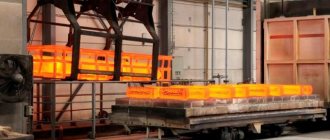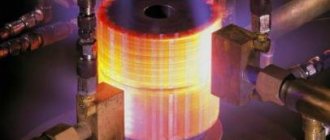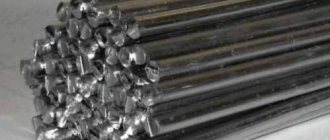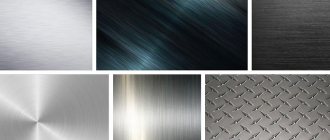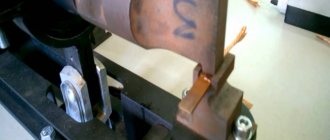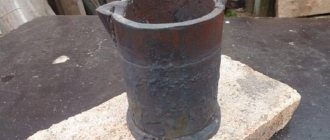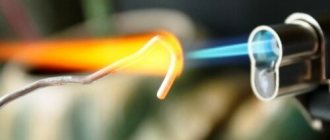At the time of this writing, the CoVID-19 pandemic has resulted in a worldwide shortage of protective masks. As part of the fight against the SARS-CoV-2 coronavirus, some companies are changing their usual production and starting to produce personal protective equipment (PPE). Thus, in March of this year in China, Foxconn was in first place in the production of protective masks. As the coronavirus now rages in Europe, Russia, the United States and many other countries around the world, the world's largest companies are following in Foxconn's footsteps, but not all are surviving. Thus, the Italian company Miroglio, specializing in the production of ready-made clothing and fabrics, recently announced the cessation of production of masks. But the German company Weber Ultrasonics, which develops components for ultrasonic welding, does not produce masks, but their technology is crucial for PPE manufacturers around the world. It is for this reason that close attention is paid to ultrasonic welding technology today. From this article you will learn what this technology is and how it works.
Today it is quite difficult to find industries that do not use ultrasonic welding.
Areas of application of ultrasonic welding
Ultrasonic welding of metal has found its application in industrial production and in the installation of technical equipment. This method of welding several structures has proven to be indispensable when working with materials with high heat conductivity. Ultrasonic metal welding is most widespread in the following situations:
- production of electrically conductive systems (carried out at industrial enterprises that specialize in the production of household appliances, electronics and components for electrical appliances);
- production of electrical wiring harnesses and cable systems (widely used for the needs of the automotive industry, medical research, production of aviation and space technology, information systems);
- welding of busbars, safety elements, connecting contacts and on/off devices (carried out in the manufacture of batteries, as well as lighting systems);
- welding of plates and foil for batteries (carried out for the production of batteries with different levels of capacity. Most often, parts are welded from copper and aluminum - metals that have low thermal conductivity. This leads to the fact that welding plates and foil requires more time and energy );
production of capacitors, thermal insulation coatings and sealed wires (coatings made using ultrasonic welding are especially in demand among manufacturers of products requiring protection from high temperatures. In particular, such components have found their use in the production of explosive devices. Sealed wires and capacitors have received high demand among companies from the microelectronics sector);
welding of pipes (used in the manufacture of heating or air conditioning systems. With the help of ultrasonic welding, their components can be more reliably connected to each other).
Ultrasonic welding of metals
Ultrasonic welding technology is the joining of parts under the influence of ultrasonic waves, which are converted into mechanical vibrations and cause plastic deformation of the planes at the point of their contact, while simultaneously destroying oxide films. The properties of metals remain almost unchanged. The ultrasonic welding installation consists of the following components:
- power supply;
- converter;
- welding head;
- waveguides.
Electricity is converted into high-frequency sound necessary for welding, the head provides compression of the working parts, and waveguides transmit energy to the point where the surfaces are welded.
The scope of industrial application of this type of welding is quite wide. It is used to connect wire, foil, and heat-sensitive materials. It is also used in the manufacture of mobile phones, microcircuits, optical and other devices. Modern automotive industry and the production of audio equipment also cannot do without ultrasonic welding. This method is valued for its high productivity, accuracy and strength, as well as its ability to weld various alloys for which conventional welding is not possible.
Advantages of ultrasonic welding
This type of welding is widely used and has proven numerous advantages:
- The absence of strong heating allows you to weld even those metals that are characterized by chemical activity.
- Welding is carried out at high speed.
- The strength of the joint of dissimilar materials increases, which would be brittle at the high temperature accompanying conventional welding.
- Technological limitations associated with welding aluminum or copper are eliminated.
- The thickness of ultrasonic welded parts is not limited; they can be thin or even ultra-thin (for example, foil), and the thickness of the elements connected by welding can vary.
- The requirements for surface cleanliness when using ultrasound are less stringent than with the conventional welding method; the presence of an oxide or insulating film is allowed.
- The welding force is low, which avoids severe deformation in the joint area.
- The design of the installation for ultrasonic welding is not complicated.
Environmental safety and hygiene are also among the advantages of ultrasound technology. Such welding requires less labor, because it can be automated. Ultrasonic welding does not require consumables, which makes it extremely economical.
Ultrasonic micro welding
One of the types of ultrasonic welding is ultrasonic microwelding. Its main area of application is microelectronics. When semiconductor chips are mounted, jumper wires or tape are created between the pads and terminals to provide the electrical connection. Ultra-thin parts can only be welded using ultrasound, monitoring its parameters using a special installation:
- power;
- pressure;
- exposure time.
The welding process is based on the interaction of electrons with adjacent molecules; the joining of the thinnest wire occurs at the atomic level using the diffusion method. Modern devices for ultrasonic microwelding make it possible to minimize the labor intensity of the process and expand the range of materials that can be welded using this method. Welding using ultrasound is used not only for metal parts, but also for plastic products when applying spot welds.
Ultrasonic soldering technologies
Ultrasonic soldering is a two-step process that involves pre-tinning the soldering surfaces and the actual soldering process. Ultrasonic soldering and tinning is possible for many metals and alloys that are easily oxidized and difficult to solder, including Kovar, nickel, aluminum, titanium alloys, etc.
Ultrasonic tinning
Ultrasonic tinning is performed using ultrasonic soldering irons or in special ultrasonic baths. When tinning in an ultrasonic bath, the oxide film is simultaneously removed over the entire surface of the product and is adjacent to the liquid solder.
Before tinning in an ultrasonic bath, part of the surface of the part to be soldered is protected from tinning by anodizing; Before anodizing, parts of the part intended for tinning can be protected with a layer of varnish, which after tinning is removed by washing with acetone. Before immersing the part in an ultrasonic bath, slag is removed from the surface of the liquid solder and the ultrasonic circuit is turned on. The duration of immersion of the part in the bath can be 5 ... 30 s, depending on the size and weight of the part. Excess solder is shaken off the part or wiped off with a rag. The tinned surface during normal soldering conditions, after the solder is erased, becomes shiny and slightly rough. Parts should be soldered after ultrasonic tinning no later than 15 days from the date of tinning.
Application of ultrasonic welding in industry
This type of ultrasonic welding is used for welding foil, wire, thin sheets and other elements. It is distinguished from other types of welding by the ability to weld dissimilar and heat-sensitive materials, because the process can occur without heating, or with minimal heating.
Ultrasonic welding is widely used in such industries as the production of microcircuits, semiconductors, microdevices, microelements for electronics, chips, capacitors, transformers, mobile phones, for the manufacture of many elements in various types of home appliances. Also, this type of welding has found application in optical instruments and precision mechanics devices, in the manufacture of reactors, vacuum drying plants, joining the ends of rolls of thin-sheet materials, in the automotive industry and many other areas of science and technology.
Additional
Equipment used
All equipment for ultrasonic welding inspection will include several components:
- Mechanics that create pressure on the parts being connected;
- An acoustic unit including a waveguide;
- Special equipment monitors the quality and control of the process;
- Generator of electrical oscillations.
Some people are wondering whether it is worth trying to make such a device with their own hands? This is only appropriate if we are talking about a highly qualified worker, since we will have to deal with physical as well as mathematical calculations. If all the rules are not taken into account and even the slightest deviation occurs from the diagram of the required equipment, it will not be possible to achieve a high-quality result, and in the worst case, the parts will not be connected at all. Therefore, before you sit down for such a project, you need to be 100% confident in your abilities and have the appropriate knowledge and experience.
What equipment is used for soldering
Soldering is considered one of the most effective and reliable methods of joining materials.
Previously, it was used for metals and their alloys, but soldering is also suitable for joining pieces of glass, plastic, and ceramics. There are many types of soldering, each of them uses special soldering equipment, tools and devices.
Soldering iron
The most commonly used tool for soldering work is a soldering iron. It’s hard to imagine workplace equipment without it. Soldering irons are used by amateurs and professionals. It all depends on the type of instrument.
Hammer
To connect large, massive parts, hammer soldering irons are used, so named because of their hammer-like shape. They are heated in ovens or braziers and, having great thermal inertia, remain heated for a long time.
Such equipment is used for soldering large parts.
Electric
The most traditional soldering method is with an electric soldering iron. It is designed very simply - a metal casing contains a heating element that heats the tip - a copper rod. The heating temperature of the soldering iron depends on the power of the heating element.
The process of soldering work consists in heating the parts to be connected using a contact method and holding them together with a special compound called solder. After cooling, a strong connection is obtained that can conduct electricity if the parts being connected are conductors.
A professional electric soldering iron can be equipped with a voltage regulator. In this case, it is possible to adjust the temperature of the tip, which is very important when assembling and installing electronic circuits.
Induction equipment is of particular interest. Induction soldering irons self-regulate heating and use electricity economically.
They produce ultrasonic soldering equipment. The ultrasonic soldering iron is equipped with a generator that produces a high-frequency signal.
In addition to a soldering iron operating from a household network, the soldering station equipment may include a soldering tool powered by 12 or 24 volts. It is suitable for debugging the operation of electronic circuits and for mounting parts and components that may fail due to overheating.
Electric soldering irons can also be cordless, powered by AA batteries.
Gas
Gas soldering irons are very convenient to use; they are heated by gas combustion. Gas equipment is represented by a huge number of models, differing in size, ignition system, and the presence of a temperature regulator.
Using gas soldering equipment, you can melt high-temperature hard solders. They produce stations for gas soldering of copper pipes, which include cylinders, reducers, a platform and a burner.
The disadvantages of electric or gas soldering irons are the inability to simultaneously heat a large area at low power. In this case, other types of equipment are used.
Infrared stations and hair dryers
Models of hot-air soldering equipment (hair dryers) are used mainly for dismantling and volumetric mounting of microcircuits on electronic device boards. Very often, a hair dryer is included in the package of a soldering station, which also consists of an electric soldering iron and a control unit.
The soldering station allows you to install and control the parameters of the tools included in it, ensuring high quality seams.
Often, the equipment for a soldering station includes a table with the ability to heat parts or circuit boards from below.
This installation uses infrared heat sources - lamps, heating elements. Some designs of heating tables are equipped with brackets and stands, which allow you to secure the boards.
Infrared equipment has a similar effect to a soldering gun. It can also be used to provide heating of a large area without allowing contact with microcircuit elements.
Infrared soldering stations allow you to control soldering and ensure smooth cooling of the metal. This is expensive equipment, which consists of entire computing systems with sets of sensors, processors and a whole list of auxiliary tools.
Tools and accessories
When manual soldering, it is not enough to have only soldering equipment. Without the necessary additional devices, it is sometimes impossible to solder anything, not just efficiently, but at all. Such devices include:
- blowtorch;
- tweezers;
- set of files;
- wire cutters;
- magnifying glass and tripod;
- clamps;
- stands.
Pros and cons of ultrasonic welding
The process of ultrasonic welding of metals has a number of advantages. These include the following aspects:
- Ultrasonic welding helps to join thin parts together with structures made of denser material;
- it is possible to carry out welding work to connect elements made of different materials;
- Ultrasonic welding helps in the production of products with high levels of thermal and electrical conductivity;
- When carrying out welding work using ultrasound, no heat is used - the parts being welded are connected to each other without melting the surface;
- the energy consumed during the welding process is used more economically;
- welding is carried out without the use of filler materials and does not require the creation of a special atmosphere in the place where the work will take place;
- Before ultrasonic welding, metal structures do not need to be pre-cleaned.
We advise you to study - Electromagnetic compatibility when using frequency converters
However, welding metal parts using ultrasound also has its drawbacks. The most important of them is the difficulties that arise when working with structures made of materials that have high heat conductivity. Also, the disadvantages of ultrasonic welding include the considerable cost of the equipment necessary for it, which also requires particularly careful care.
As a result, it becomes obvious that ultrasonic welding is capable of providing the same high-strength and reliable connection of metal parts that is achieved with the conventional welding method. The advantages of ultrasonic welding of metals are obvious. It not only helps to wisely use the energy spent on the welding process, but also allows you to work with structures of different thicknesses and made of different materials. Despite the fact that the ultrasonic welding process has some disadvantages, it is recommended to resort to it to obtain firmly welded metal parts.
What is ultrasound?
Ultrasound is sound waves that travel through space like photons of light. However, unlike light waves, which can travel in a vacuum, ultrasound requires an elastic medium, such as a gas, liquid or solid, to propagate. It is noteworthy that the human ear perceives a limited frequency of sound waves, and by ultrasound scientists mean frequencies above 20,000 hertz. Despite the fact that the existence of ultrasonic waves has been known since 1883, its practical use began not so long ago. Thus, in 2022, technologies using ultrasound are used almost everywhere. And in the wild, ultrasonic waves help dolphins, bats, whales, tarsiers and rodents detect obstacles, navigate in space and communicate. Ultrasonic waves are also found as components of natural noise, for example in the noise of rain, wind, waterfalls and in the sounds that accompany lightning discharges, etc.
Ultrasonic welding is a technology used to join fabrics (without threads or glue) and many other materials, including plastic and metal.
Advantages and disadvantages when working with plastics
When working with plastics, the following advantages of the method exist:
- high performance;
- low cost of surgery;
- tightness of seams on thick-walled workpieces;
- no need for surface preparation;
- no overheating;
- absence of electrical interference and electromagnetic radiation;
- compatibility of the operation with other operations of the technological process, spraying, cutting in other planes, etc.;
- versatility across types of plastics;
- lack of consumables and chemicals.
- aesthetics and invisibility of the seam.
Ultrasonic welding of plastics
There are also disadvantages:
- The low power of the emitter forces energy to be supplied from two sides.
- Difficulty in controlling seam quality.
The quality of the connection depends on the accuracy of the selection and stability of the installation parameters during operation.
Adjustable Parameters
The power supplied by the converter is determined according to the thickness and characteristics of the parts being welded. In typical mode it ranges from 4 to 6 kW. The vibrational amplitude is most often set at a level of 10 - 20 µm. The characteristics of the compound and the degree of its strength depend on it
Attention is also paid to the compressive force
It determines how physical contact between parts will be maintained. Normally, this force varies from 100 to 2000 kN. Friction when moving a part relative to another surface is determined by the same compressive force. Finally, the duration of ultrasonic welding cannot be ignored. If the time is very short, then the strength of the connection will be low, and if the process is tightened too much, the parts become covered with deep dents and fatigue damage appears.
Ultrasonic welding is inevitably accompanied by the release of heat due to contact friction. The maximum permissible heating is 50 - 70% of the temperature at which materials melt. Sometimes parts can even be specially heated. This allows you to work faster and achieve increased strength. But again, excessive heating will be contraindicated.
The essence of ultrasonic welding
During ultrasonic testing of metals, the necessary conditions for the formation of a welded joint occur under the influence of ultrasonic waves transformed into mechanical vibrations. Vibration energy generates complex tensile and compressive stresses, as well as shear stresses.
When the stresses exceed the elastic limit of the materials being welded, plastic deformation occurs at the plane of their contact. Under the influence of ultrasound and plastic deformation, surface oxide films are destroyed and removed from the surface, after which a welded joint is formed.
At the same time, an increase in temperature in the welding zone does not have a significant effect on the welding process. During ultrasonic welding, the structure and properties of the metals being welded change slightly.
Basic diagrams of the ultrasonic welding process
Ultrasonic welding is performed on special installations that have a built-in high-frequency electromagnetic wave generator. The installation also has a mechanical oscillating system, welding process control equipment and a drive that creates pressure on the welded joint. The main diagrams of installations for ultrasonic welding of metals are presented in the figure:
The transformation of electromagnetic waves into mechanical vibrations and their supply to the welding zone is carried out using an oscillatory system. The main unit of oscillatory systems (see figure) is the converter (item 1). The converter produces mechanical vibrations. With the help of the waveguide link (item 2), energy is transferred to the welding tip and the amplitude of oscillations increases in comparison with the amplitude of the initial waves of the converter. In addition, the converter transforms the load resistance and concentrates energy in a given area of the welded joint (item 5).
With the help of acoustic decoupling (item 3) from the machine body, almost all the energy of mechanical vibrations is converted and concentrated at the contact area. The welding tip (item 4) is a wire waveguide link between the load and the oscillatory system. Using it, the required area and volume of the direct source of ultrasonic vibrations in the welding zone is set.
Application
Benchtop ultrasonic baths are used for hot tinning of parts and leads of electronic components, and ultrasonic soldering irons are used for soldering and metallization of ceramic and ferrite materials. The use of modern electronic sources of ultrasonic vibrations makes soldering a reliable, environmentally friendly process and eliminates the use of fluxes.
For ultrasonic soldering processes in electronics, lead-free tin-based alloys have been sufficiently studied: double Sn-Zn, Sn-Bi, triple: Sn-Bi-In, Sn-Bi-Zn, Sn-In-Ag, Sn-Sb-Zn, Sn-Sb-Ag and quaternary alloy: Sn-Zn-In-Sb. All these alloys have a melting point in the temperature range 135 ... 220 ° C.
Fluxless ultrasonic soldering is an environmentally friendly process and is more economical since operations such as fluxing and cleaning, which require time and materials, are eliminated. Flux-free soldering in some cases is a necessary condition for internal installation and sealing of microelectronic equipment. Using ultrasonic metallization and soldering, materials are joined that are difficult to solder: nickel, aluminum, magnesium and titanium alloys, as well as non-metallic materials: ceramics, glass, ferrites. This creates the opportunity to save precious metals deposited on the dielectric surfaces of electronic components as metallization.
When choosing solders for ultrasonic flux-free soldering and tinning of various materials, one should take into account their ability to solder, the chemical affinity of the materials being soldered and the ability to create a high-quality connection according to the state diagram of the alloys. The use of lead-free solders with the addition of Zn, In, Ag leads to an increase in the adhesive activity of the melt and reduces their oxidation during ultrasonic soldering.
Features of welding polymers using ultrasound
Ultrasonic welding of polymers has the widest range of applications. Its advantages include the inability to overheat materials, the ability to connect edges in places with difficult access and products with foreign coatings. In addition, ultrasonic welding facilitates the processing of materials that have a short interval during crystallization.
The operating principle of equipment for ultrasonic welding of polymer films is as follows. The sheets to be welded are placed on top of each other and pressed firmly against the support. A welding tool connected to an ultrasound conversion device is brought to them with the required force. It is driven into action by turning on the generator. Polymer elasticity increases from voltage acting at the ultrasound frequency. Moreover, in welding thin-sheet films, it extends to the entire volume of the part between the support and the tool, and for products with large thicknesses - only to the contact zone of the edges being welded. For better adhesion when joining large workpieces, irregularities can be specially applied to their edges.
At the beginning of ultrasonic welding of plastics, physical interaction of the surfaces occurs with the activation of polymer molecules due to the breaking of chemical bonds. The next stage is the chemical reaction of the materials being welded with each other, which subsequently turns into mutual penetration. Deformations of polymer materials under the influence of ultrasound frequency provoke their heating to the temperature necessary for crystalline melting or transition of the plastic into a viscous-flow state. At the same time, the diffusion process of individual parts of the macromolecule begins with mixing of the viscous compositions of the polymers being connected. The weldability of the material is determined by the size of such parts; the larger they are, the better the quality of the weld. The strength of the resulting joint is determined both by the physical and mechanical characteristics of the welded objects and by the capabilities of the ultrasonic welding machine.
We advise you to study - Designs of insulated wires of overhead power lines
The necessary prerequisites for the formation of a high-quality weld are created under the influence of the vibration mechanics of the ultrasonic transducer. The vibration energy obtained in this way forms shear and compression (tensile) stresses, which contribute to exceeding the maximum elasticity of polymers. When it is reached, plastic deformation is formed in the area of contact of the joined plastics. Its result, as well as the influence of ultrasonic vibrations, is the expansion of areas of direct contact with the simultaneous removal of gases, surface oxides, organic and liquid films from them. All this contributes to the strength of the seam formed.
Pulse soldering iron: device design
A pulse soldering iron is necessary for assembling (dismantling) elements of electrical and electronic products. The heating element is a tip, which is made of copper wire (diameter 1-3 mm) coated with other metals. The tip is heated by passing a low voltage current through it. The soldering iron consumes little electricity, since current passes through the tip only during soldering. The device has a mains voltage converter with a frequency of 18−40 kHz. The secondary (power) winding is connected to the current collectors of the tip.
The main difference between a pulsed soldering iron and a regular soldering iron is that it does not need to always be kept on to maintain the temperature. The tip is heated within a few seconds. It is precisely because of this that the device does not consume electricity most of the time.
Types of soldering irons:
- Induction;
- Ceramic;
- Pulse;
- Rechargeable.
Welding rigid plastics
Welding of polystyrene, styrene copolymers, polymethyl methacrylate, caprolon, polycarbonate and other polymers with a high elastic modulus and low attenuation coefficient is widely used in the manufacture of various volumetric parts and structures: from containers and vessels to consumer goods (sports products and toys). In this case, ultrasonic welding can significantly reduce the labor intensity of the process, increase labor productivity, improve production standards and get rid of the use of toxic adhesives that are harmful to human health.
Depending on the shape of the product and the material, resistance and transfer welding or a combination of these methods can be used. When transfer welding there is no need to heat up the entire volume of material. The weld is obtained as a result of the melting of the polymer in the contact area of the parts. It is clear that during the welding process one should strive to concentrate the energy of ultrasonic vibrations directly on the joining surfaces. By changing the geometry of the parts being welded, it is possible to concentrate the energy of ultrasonic vibrations in one or another combination, which allows you to speed up the welding process.
Various shapes and sizes of joints of parts for ultrasonic welding are recommended, depending on specific products and materials, but the most common is the V-shaped groove of edges, which is easy to manufacture and gives good indicators of the strength of welded joints. The most effective angle at the top of the V-shaped protrusion is an angle of 90°, which ensures a minimum contact area between the parts before welding.
Small-sized parts of simple shape are welded using one contact of the waveguide with the product, and the waveguide is installed perpendicular to the surfaces to be welded, along the axis of symmetry. if the part is complex and the length of the weld is significant, then the number of points and the location of the introduction of ultrasonic vibrations is determined experimentally. Depending on the shape of the molded product, waveguides with a flat or shaped working surface can be used for welding. In the latter case, the working end of the waveguide is adjacent to the surface of the parts being welded, copying its shape. This is necessary when you need to get a sealed seam.
To fix parts, various holding devices can be used: nest-shaped supports, spherical ones, etc. Optimal welding mode: time 3 s; amplitude 40-40 µm; compression force 50-150 N; frequency 22 kHz.
Advantages of ultrasonic welding
Ultrasonic welding is possible in hard-to-reach places, and the absence of harmful emissions makes this process safe for health
Modern ultrasonic welding is very fast. It only takes about a quarter of a second to form a bond, making it suitable for mass production of all types of protective masks, hygiene products and PPE such as surgical masks. The good news is that a company in Germany - despite the difficult epidemiological shutdown - is working on creating a 3D printer for printing protective and surgical masks.
On our Yandex.Zen channel you can find materials that are not published on the site. Subscribe so you don't miss anything interesting!
However, one thing that ultrasound equipment manufacturers still worry about is the availability of raw materials and nonwovens, which may soon run out. And yet, we at the editorial office of Hi-News.ru hope that this will not happen and that there will indeed be enough protective masks for everyone, primarily for employees of medical institutions. Well, you and I can easily make protective masks from scrap materials. Read about how to sew a mask or even do without thread and needles in our material. Be healthy!
Advantages of ultrasonic welding
The advantages of the method include:
- excellent strength of connected parts;
- no need for preliminary preparation of surfaces (grinding, cleaning dirt, etc.), as well as cleaning the seam after crystallization;
- There are no internal weld stresses at all stages of work;
- the seam is not visible externally;
- the process can proceed without operator participation;
- increasing production efficiency by saving welders time to work;
- the ability to combine a number of operations (with metal cutting or drawing);
- when ultrasonic welding, additional consumables or connecting elements are not required (glue, threads, solvents);
- when exposed to an ultrasound wave, any of its components do not have a negative effect on a person;
- no protective environment (gas) required;
- economical use of electricity.
DIY soldering iron: simple assembly diagrams
Before making a soldering iron with your own hands, you should determine what exactly it will be used for and what materials are available at home.
“Moment” from a house-saving lamp
Components of the device:
- Converter from an energy-saving lamp (power 40 W);
- Transformer;
- Copper wire;
- Frame.
The characteristics of the converter are suitable for a medium-power soldering iron. The safety of the device is enhanced by a standard fuse and overheating control on the thermistor. The circuit is very compact and can be placed in any housing.
The transformer is made independently. You can use a ferrite ring from a broken electrical transformer. The primary winding must be wound from 0.5 mm wire, the number of turns is 100-120. And the power one should be made of wire with a cross-section of 3 to 3.5 square meters. mm. You need to make one turn. We attach a tip made of nichrome or copper wire (1.5 - 2 mm) to it. The thickness of the last winding should be greater than the thickness of the tip. Next, you need to come up with a body for the device, make a switch, and the device is ready.
From a Chinese transformer
For manufacturing, you need either a working twelve-volt power supply, or one with a burnt-out secondary winding. Any Chinese device will do just fine.
It is necessary to remove the circuit from the case and check the serviceability of the parts. We do not touch the converter, since we only need to change the appearance of the transformer. Next, we remove the secondary winding and make a new one from copper wire (the cross-section should be 1.5-3 sq. mm). If the cross-section is small, fold the wire in half. What is important is the overall cross section, which will be at least three squares. The winding is equal to one incomplete turn. Then, carefully thread it into the transformer body, first bending it like a hairpin. The transformer is soldered to the control board, and the power winding must be fixed with dielectric glue (for example, cold welding). Next, we insert the circuit into the case.
A wooden handle from a regular soldering iron can be used as a handle. Other options are possible, given the compactness of the device as a whole. We insert a non-fixed switch into the handle. The operation of a pulse device is based on a short circuit of the secondary winding , as a result of which prolonged heating can lead to destruction of the transformer and a fire. For this reason, a fixed starter is not permitted. Next, you need to assemble the device completely and install the clamps for the tip (for example, inserts from a terminal box for wiring). This device is very compact and easy to use for small soldering jobs. Thanks to the replaceable tip, you can change its appearance.
These options are only a small fraction among the variety of schemes for manufacturing pulsed devices.
Ultrasonic Welding Process
Schematic diagram of welding.
The essence of the process is the action of mechanical vibrations of the highest frequency in combination with moderate compression on both welded surfaces. Mechanical vibrations of this frequency are formed as a result of the magnetostrictive effect: some metal alloys change their size due to the action of an alternating magnetic field.
Nickel and iron-cobalt alloys are the best ultrasonic transducers; they are good magnetostrictive materials. The change in their sizes is extremely small, so special waveguides of a specific tapering shape are used to concentrate energy and increase amplitude.
These waveguides have an average force factor of 5.0 with an amplitude of approximately 20 – 30 µm at no-load conditions. And such an amplitude of vibrations is more than enough for a high-quality connection: according to many experiments in experimental ultrasonic processes, even vibrations of 1.3 microns give a completely reliable welding seam.
It includes the following technical components:
- waveguide;
- support in the form of a pendulum;
- diaphragm;
- current supply for the converter;
- mechanical compression drive;
- water cooling system in the form of a casing.
The ultrasonic installation itself consists of the following components:
- magnetostrictive transducer;
- the waveguide itself;
- welding roller;
- current supply;
- water supply for cooling;
- pressure roller;
- converter protective casing;
- mechanical rotation drive.
Scheme of resistance ultrasonic welding.
High frequency current is supplied from the ultrasonic generator to the winding of the magnetostrictive transducer. A waveguide with a special working projection amplifies and transmits mechanical vibrations to the tip of the welding tool.
The protrusion on the waveguide during the process receives high-frequency vibrations, which are mechanical horizontal movements of high frequency in nature.
The duration of the welding process directly depends on the thickness and nature of the metal being welded. If the edge of the metal is thin, the formation of a seam takes literally a split second.
High-frequency vibrations of the welding tool tip tend to be polarized in the same plane as the surface of the plate above. The vibrations are transmitted to the plates and supports with the required amplitudes, taking into account the fact that the vibration energy is damped at all transmission points.
The joining process itself begins from the moment the micro-irregularities of the surfaces that are joined come into contact, resulting in their deformation. As soon as ultrasonic vibrations are turned on, these micro-irregularities additionally shift, and setting zones appear.
If, from the very beginning of ultrasonic exposure, dry friction occurs on the surfaces being connected, destroying oxide films of liquids and gases, then dry friction subsequently turns into pure friction, which forms and strengthens bonding zones.
The nature of the vibrations further strengthens the grip: reciprocating movements with a small amplitude.
In the working area during ultrasonic welding, heat is generated due to the process of friction and deformation on the surfaces being connected. The temperature in the working area depends on the characteristics of the metal: its hardness, thermal conductivity and heat capacity.
Compliance with the ultrasonic welding technology produces a weld seam equal in strength to the base metal.
Ultrasonic soldering and tinning process
Ultrasonic soldering
The essence of the phenomena occurring during these processes is that, as a result of ultrasonic vibrations, periodic stretching and compression of particles and molten solder occur, and cavitation processes occur in it. Shock pulses resulting from solder cavitation affect the soldered or tinned surfaces and intensively destroy the oxide film. Particles of this film, which are less dense than solder, float to the surface of the latter.
With ultrasonic tinning there is no need to use fluxes.
During ultrasonic soldering, vibrations of tool 2 (Fig. 67) excite cavitation phenomena in molten solder 3. As a result, in the joint zone, the oxide film 1 is destroyed and contaminants are separated; the connected surfaces of parts 4 are cleared of them and their soldering is intensified. Due to the fact that the destruction of the oxide film occurs locally, in a narrow zone, the tools are moved during soldering along the entire length of the joint.
Rice. 67. Ultrasonic soldering circuit
Rice. 68. Scheme of ultrasonic tinning
During tinning (Fig. 68), ultrasonic vibrations are transmitted to bath 4 with solder 3, into which the part to be serviced 2 is immersed. The bath is connected to the concentrator 6 of the oscillatory system or is integral with it. Melting of solder in the bath is carried out by heater 5. As a result of the same phenomena as during soldering (cavitation), oxide films 1 are destroyed and float to the surface of the solder. The clean metal of the part being serviced is released; fast and high-quality tinning is ensured.
Ultrasonic tinning is used when mechanical vibrations are transmitted not to the solder, but directly to the part itself. However, this method has not become widespread due to the complexity of implementation and the need to manufacture special oscillatory systems. Large surfaces are subjected to ultrasonic tinning with hand-held devices - “guns”, moving them during the work over the entire tinning area.
The efficiency of ultrasonic soldering and tinning at a certain vibration amplitude and frequency is largely influenced by the size of the gap between the working end of the tool and the soldering or tinning surface and the time of exposure of the solder to ultrasound. This gap is usually 0.2-2.5 mm. The exposure time to ultrasonic vibrations is most often selected in a practical way; The criterion for this is the quality of soldering or tinning. It is known that to ensure an optimal tinning thickness of 0.1-0.2 mm, with the specified gap size, the speed of movement of the ultrasonic tool is approximately 20x10-4-25x10-4 m/s. Tinning by dipping into molten solder is performed with ultrasound in a few seconds. The optimal speed of movement of an ultrasonic tool during soldering is considered to be 8x10-3-10x10-3 m/s.
Similar materials
Ultrasonic microwelding installations
Ultrasonic welding has found wide application in microelectronics. In the modern world, almost every average person has devices assembled using nanometer technological processes (for example, a mobile smartphone). Thus, the need to create a workplace for a micro-welder is becoming obvious, and the need for specialized micro-welding equipment is becoming more and more urgent.
Let's look at the main ultrasonic microwelding devices.
- The UMS-1AK installation is designed for automatic and semi-automatic ultrasonic and thermosonic welding of gold wire using the “ball-wedge” method and aluminum and gold wire using the “wedge-wedge” method. The automatic installation is controlled using a specialized control system based on a personal computer, which allows programming up to 100 technological parameters: height, length, jumper angle, etc. The installation is equipped with a machine vision system for recognizing patterns of contact pads of semiconductor devices. The installation is equipped with an ultrasonic generator with the ability to automatically adjust the resonant frequency during the welding pulse, using ultrasonic piezoceramic transducers with a resonant frequency of 62 kHz; 108 kHz.
- Ultrasonic microwelding machine UMS-1UTIs used for ultrasonic lap welding of aluminum and gold wire “wedge-wedge”. The installation is equipped with an additional manual mechanical drive for lowering the welding head along the Z axis using a “handle” for the purpose of precise positioning of the welding electrode relative to the contact pad and for prompt correction of the welding level with a difference in height of up to 6 mm and a “well” depth of up to 18 mm (with a length of electrode 21 mm, 3 mm remain for securing the electrode in the ultrasonic transducer).
- The UMS-2ShK installation is designed for automated thermosonic welding of gold wire leads using the “ball-wedge” method, with additional fastening of the “wedge” with a “ball”, with the possibility of attaching gold balls to contact pads (bumping) and “overlapping” using the “wedge-wedge” method. In addition, the installation is designed for automated ultrasonic welding of aluminum wire and tape welding.
- Ultrasonic welding installation UMS-21U is used for ultrasonic welding of aluminum wire with a diameter from 100 microns to 500 microns overlapping using the wedge-wedge method. The installation is manufactured in two versions: when assembling devices with wire with a diameter of 100 to 350 microns, the wire is separated from the second welded joint using clamping jaws; when installing with wire with a diameter of 400-500 microns with cutting the welding wire after the second welding using a “knife”.
- Ultrasonic welding installation UMS-2TKU, designed for point connection of gold wire leads with a diameter of 15 to 50 microns to contact pads without body diodes using thermocompression and thermosonic microwelding (for wire mounting of hybrid integrated circuits).
We advise you to study - Air conditioners: properties and functions
Method of soldering parts with an ultrasonic soldering iron
The method can be used to restore parts by soldering using ultrasound.
The solder is fed in the form of a rod through a hole inside the copper solder rod. The solder is melted by heating the soldering rod with an electric heating coil. The upper part of the end of the soldering rod is made of a spherical shape to smooth the resulting layer of solder. The method allows you to expand technological capabilities while improving the quality of surface treatment of parts. 1 ill. The invention relates to the restoration of parts by soldering, namely in our case, soldering using an ultrasonic soldering iron.
There are many known methods of restoration and manufacturing of parts by soldering, in which ultrasonic soldering irons are used. According to a literary source, a method of soldering with an ultrasonic soldering iron UP-21 is known, which operates at a frequency of 20-26 kHz from an ultrasonic generator. The disadvantages of this method are as follows: solder is supplied to the seam being processed (surface), individually applied to the seam being processed (surface) in the form of a rod, which significantly complicates the soldering work as the time to complete the work increases and the quality of the work performed (soldering) deteriorates.
The closest analogue of the claimed invention is a method for soldering parts with an ultrasonic soldering iron (SU 831447, IPC 7 B 23 K 1/06, 05/30/1961), according to which solder is fed through a hole inside the soldering rod, and it is melted using an electric heating coil.
The objective of the invention is to expand the technological capabilities of soldering seams (surfaces) while reducing the time required to carry out work and improving the quality of processing, as well as providing more convenient work for the performer.
The specified technical result is ensured by the fact that solder in the form of a rod is inserted into the body of the soldering iron (into the ultrasonic vibrator), which, when heated by the electric heating coil, melts and enters the seam (surface) being processed, compacting and interspersing solder elements into the seam (surface) with the help of ultrasonic vibrations , which destroy the oxide film on the surface being processed, and the upper part of the end of the rod, made in a spherical shape, smoothes and incorporates (under its pressure) the applied layer of solder, which ensures the completion of the given task.
The drawing shows a diagram of a device (ultrasonic soldering iron) that ensures the implementation of the proposed method.
The method is carried out as follows. On a machine, on a special installation or on an automatic line for soldering parts, or manually, parts for soldering are installed, previously prepared for soldering according to the technology. Soldering with an ultrasonic soldering iron is carried out using low-temperature solder, which has some features when soldering aluminum parts, which are explained by the formation of a strong and refractory oxide film on the surface of the parts, which prevents the parts from joining. When soldering with this soldering iron, ultrasonic vibrations occur in the molten solder, which destroy the oxide film on the parts. The surfaces of the parts, free of oxides, are well connected to the solder and provide strong soldering.
Example. The parts are soldered using an ultrasonic soldering iron shown in the drawing. Soldering with low-temperature solders is carried out with preliminary preparation of parts for soldering, soldering and processing of parts after soldering. Preparing parts for soldering includes cleaning the edges of parts from contamination and oxides, heating the parts to soldering temperature, fluxing (if necessary) and tinning the surfaces to be joined. Next, the product is assembled, ensuring a gap between them of 0.05-0.20 mm. Then the tip 8 of the ultrasonic vibrator 3, the soldering iron (copper rod 6) is brought to the junction of the parts to be connected 1, where the ultrasonic vibrator 3, operating at a frequency of 20-26 kHz, using the spiral 4 of the ultrasonic generator, supplies ultrasonic vibrations to the molten solder, which, destroying the oxide film on the parts, are connected to solder 2, which is fed in the form of a rod 7 into the hole of the vibrator (which is made along its axis), melted by heating the copper rod 6 using an electric heating coil 5, smoothing the applied layer of solder using a tip 8, ending the process rations.
Low-temperature soldering has become widespread in car repairs, namely in the repair of water and oil radiators, electrical parts of fuel tanks and other parts. The quality of soldering is usually controlled by crimping parts with compressed air or water.
A method for soldering parts with an ultrasonic soldering iron, including supplying solder through a hole inside a soldering rod and melting it by heating the solder rod using an electric heating coil, characterized in that solder is supplied in the form of a rod, and the upper part of the end of the soldering rod is made spherical to smooth the resulting layer solder, using a soldering rod made of copper.
Ultrasonic welding of metals and its varieties
When ultrasonic welding, a permanent joint of metals is formed by the combined action of high-frequency mechanical vibrations and relatively small compressive forces on the parts. This method ensures the production of highly reliable connections, eliminates general heating of the product, allows you to connect combinations of materials that are difficult to weld using conventional methods, etc.
To obtain high-frequency mechanical vibrations, the magnetostrictive effect is usually used, which consists of changing the dimensions of certain metals and alloys under the influence of an alternating magnetic field. For ultrasonic transducers, pure nickel or iron-cobalt alloys are usually used. To increase the displacement amplitude and concentration of vibration energy, waveguides or concentrators are used, which in most cases they have the shape of a truncated cone. For welding metals, it is enough to have waveguides with a gain of about 5, while the amplitude of vibrations at the end of the waveguide at idle speed should be 20. . .30 µm.
Several types of ultrasonic welding are used. The main component of the machine for making point connections using ultrasound is a magnetostrictive transducer (Fig. 1). Its winding is powered by high-frequency current from an ultrasonic generator. Water-cooled magnetostrictive transducer 1 is made of permendur (K49F2), it serves to convert high-frequency current energy into mechanical vibrations, which are transmitted to the waveguide 7. At the end of the waveguide there is a working protrusion 5. When welding, product 4 clamped between the working projection 5 and the pressing mechanism 3, to which the force necessary to create pressure during the welding process is applied.
High-frequency elastic vibrations are transmitted through the waveguide 7 to the working protrusion 5 in the form of horizontal mechanical movements of high frequency. The duration of the welding process depends on the metal being welded and its thickness; for small thicknesses it is calculated in fractions of a second.
Rice. 1. Installation diagram for ultrasonic spot welding: 1 - magnetostrictive transducer; 2 - diaphragm; 3 — pressing mechanism; 4 - product; 5 - protrusion; 6 — pendulum support; 7 - waveguide; 8 — water cooling casing
The main components of the machine for making suture joints using ultrasound (Fig. 2): a rotating magnetostrictive transducer 1 and a waveguide 3. The end of the waveguide has the shape of a roller 4. The parts 6 to be connected are clamped between the rotating roller 4 of the waveguide and the idle roller 5. High-frequency elastic vibrations are transmitted through the waveguide to the roller, which rotates along with the waveguide. The product, sandwiched between the rollers, moves between them, at the same time creating a hermetic connection.
Rice. 2. Installation diagram for ultrasonic roller welding: 1 - magnetostrictive transducer; 2 — current supply from an ultrasonic generator; 3 - waveguide; 4 - welding roller; 5 - pressure roller; 6 - product; 7 — converter casing; 8 - drive
Welding along the contour ensures a hermetic seam of the most complex contours. Its simplest form is ring welding.
Rice. 3. Installation diagram for ultrasonic contour welding: 1 - waveguide; 2 - replaceable hollow pin; 3 - product to be welded; 4 - replaceable clamping pin; 5 - clamping support
In this case, a conical pin shaped like a tube is inserted into the waveguide (Fig. 3). When the parts are evenly pressed against the welding pin, a tight connection is obtained along the entire contour
This is interesting: How to use a hair dryer to weld plastic - brief instructions
DIY ultrasonic soldering iron
When you need to quickly solder something, but don’t want to wait for the tip to warm up, a pulse soldering iron will come to your aid.
Its main advantage is that it reaches operating temperature in 1-2 seconds.
Of course, you can buy such a soldering iron in a store, but it will be much cheaper and more pleasant to assemble it yourself, especially if you have unnecessary radio parts lying around.
Any induction (pulse) soldering iron consists of a step-down transformer, a short-circuit button and a tip made of copper wire, 1-3 mm thick. In some designs, a power source and other elements are added to them.
This is what the circuit of a simple induction soldering iron looks like:
It should be noted that in this diagram the transformer has two secondary windings: one powers the lamp to illuminate the soldering area, and the other powers the tip.
A pulse and induction soldering iron are not the same thing.
Pulse soldering irons are called induction soldering irons that incorporate a high-frequency voltage converter.
The example device with a step-down transformer is not pulsed.
How the device works
The soldering iron works in this way: when you press the button, the voltage is supplied to the transformer, where it drops to 0.5-2 volts (accordingly, the current increases greatly) and goes to the tip, quickly heating it up. When you release the button, the tip also cools down quickly, so after releasing the button you need to quickly move it away from the part being soldered, otherwise it will be soldered to it.
Of course, a pulse soldering iron has differences from a regular one, among them there are both pros and cons.
The advantages include quick heating and equally rapid cooling (the risk of getting a burn if you accidentally touch the tip is significantly reduced).
Unfortunately, it has more disadvantages:
- greater weight and size, inability to accurately regulate temperature;
- the presence of an electrical potential on the tip, which can damage the electronic components being soldered - this drawback is absent in induction soldering irons with insulated tips;
- impossibility of long-term continuous operation (the standard operating mode for them is from 5 to 8 starts per 1 minute for an hour, then a break to cool down for 20 minutes).
Types of instruments
There are 4 main types of these devices. They can exist as separate species, but their characteristics can also be combined. Main types of soldering irons:
- network, operating at network frequency;
- with forced heating;
- pulse;
- with an isolated tip.
There are also pulse soldering irons with an insulated tip and forced heating. Incompatible types are mains and pulse soldering iron.
Pulse, in contrast to unregulated network, can already have power regulation through the use of a pulse converter that operates at high frequencies and can change power using the pulse-width modulation method. Due to the relatively small size of the converter, this type of induction soldering iron is the most compact of all.
Soldering irons with forced heating are devices that include a battery of powerful electrolytic capacitors connected in parallel to the tip and separated from it by switches or powerful field-effect transistors.
This afterburner works as follows: when the tip is turned off, the transistors open and the capacitor begins charging. After charging is complete they close. Then, when the tip turns on, the transistors open again, discharging the capacitors, and for a short time the power of the soldering iron increases several times.
This function makes it possible to solder massive elements with high heat capacity.
To eliminate the possibility of damage to microcircuits, insulated tips were invented. In them, the working surface of the tip is electrically isolated from the heater.
Such tips are similar to ordinary soldering irons: the tip is a thick copper rod, on which several turns of large-section wire are wound.
The rod is protected from contact with the wire by fiberglass wrapped around it.
Transformer device assembly
This type of soldering iron is the simplest. Therefore, it will not be difficult to assemble it.
To do this you will need the following components:
- The core is from a ShP type transformer (if you can’t find it, you can use the P type, it’s worse, but it will also do).
- Copper wire in varnish insulation with a cross section of 0.3 mm, for the primary winding.
- Copper wire or bus with a cross-section of 12-15 mm, which will go to the secondary winding.
- Copper wire, 2-3 squares, for making a sting.
- 2 terminals for connecting it.
- A switch in the form of a button that operates to close.
- Any soldering iron case and power cord convenient for you.
